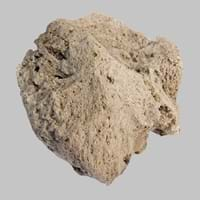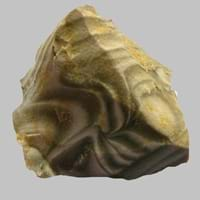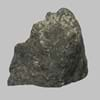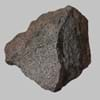Definition
Pumice is a volcanic rock that consists of highly vesicular rough textured volcanic glass, which may or may not contain crystals
Flint is a hard type of sedimentary rock that produces a small piece of burning material when hit by steel
Discoverer
Unknown
Unknown
Etymology
From Old French pomis, from a Latin dialect variant of pumex
From Old English flint - a type of rock mainly known for high hardness and for giving off sparks when struck
Class
Igneous Rocks
Sedimentary Rocks
Sub-Class
Durable Rock, Medium Hardness Rock
Durable Rock, Hard Rock
Group
Volcanic
Not Applicable
Other Categories
Fine Grained Rock, Opaque Rock
Fine Grained Rock, Opaque Rock
Texture
Vesicular
Banded, Rough
Color
Beige, Colourless, Grey, Light Green, Light Grey, Pink, White, Yellow- grey
Black, Brown, Green, Grey, Red, White
Durability
Durable
Durable
Scratch Resistant
Yes
Yes
Appearance
Vesicular
Glassy or Pearly
Interior Uses
Decorative Aggregates, Flooring, Homes, Interior Decoration
Decorative Aggregates, Homes, Interior Decoration
Exterior Uses
As Building Stone, As Facing Stone, Garden Decoration, Paving Stone
As Building Stone, As Facing Stone, Garden Decoration, Office Buildings, Paving Stone
Other Architectural Uses
Curbing, Powder
Curbing
Construction Industry
As Dimension Stone, Cement Manufacture, for Road Aggregate, In landscaping and horticulture, Making natural cement, Production of lightweight concrete blocks
Arrowheads, Cutting Tool, Spear Points
Medical Industry
As an abrasive in skin exfoliating products, In Chemical and Pharmaceutical Industry, Medicines and Cosmetics
Not Yet Used
Antiquity Uses
Artifacts
Artifacts
Commercial Uses
As a traction material on snow-covered roads, As an abrasive in pencil erasers, Fine abrasive used for polishing, Manufacture of Soap, Solvents, Dyes, Plastics and Fibres, Used in aquariums
Creating Artwork, Gemstone, In fire-starting tools, Manufacture of tools, Metallurgical Flux, Jewelry, To ignite fire, Used in flintlock firearms
Types
Scoria
Not Available
Features
Host Rock for Lead
Clasts are smooth to touch, Easily splits into thin plates, Has High structural resistance against erosion and climate
Archaeological Significance
Monuments
Not Yet Used
Not Yet Used
Famous Monuments
Not Applicable
Not Applicable
Sculpture
Not Yet Used
Not Yet Used
Famous Sculptures
Not Applicable
Not Applicable
Pictographs
Used
Not Used
Petroglyphs
Used
Not Used
Figurines
Not Yet Used
Not Yet Used
Formation
Pumice rock forms when the magma cools so quickly that atoms in the melt are not able to arrange themselves into a crystalline structure.
Flint is formed by the decomposition and compaction of various organisms such as sponges and diatoms under the water.
Mineral Content
Aluminum Oxides, Calcite, Carbonate, Iron Oxides, Silica
Silicon
Compound Content
Al, Aluminium Oxide, CaO, Carbon Dioxide, MgO, Silicon Dioxide
Silicon Dioxide
Types of Metamorphism
Burial Metamorphism, Impact Metamorphism
Not Applicable
Types of Weathering
Biological Weathering, Chemical Weathering, Mechanical Weathering
Not Applicable
Types of Erosion
Chemical Erosion, Coastal Erosion, Glacier Erosion, Sea Erosion, Water Erosion, Wind Erosion
Chemical Erosion, Coastal Erosion, Water Erosion
Grain Size
Fine Grained
Very fine-grained
Fracture
Planar
Conchoidal
Streak
White, Greenish White or Grey
White
Porosity
Highly Porous
Highly Porous
Cleavage
Perfect
Non-Existent
Specific Gravity
2.86
2.5-2.8
Transparency
Opaque
Translucent to Opaque
Density
0.25-0.3 g/cm3
2.7-2.71 g/cm3
Resistance
Impact Resistant, Pressure Resistant
Heat Resistant, Impact Resistant, Pressure Resistant, Wear Resistant
Deposits in Eastern Continents
Asia
Afghanistan, Indonesia, Japan, Russia
Azerbaijan, China, Russia
Africa
Ethiopia, Kenya, Tanzania
Not Yet Found
Europe
Greece, Hungary, Iceland, Italy, Turkey
Austria, Belgium, Cyprus, Denmark, France, Germany, Italy, Malta, Netherlands, Poland, Portugal, Romania, Spain, Sweden, Switzerland, Turkey, Ukraine, United Kingdom
Others
Not Yet Found
Not Yet Found
Deposits in Western Continents
North America
Bahamas, Barbados, Canada, Costa Rica, Cuba, Jamaica, Mexico, USA
USA
South America
Argentina, Chile, Ecuador, Peru
Bolivia
Deposits in Oceania Continent
Australia
New Zealand, Western Australia
New Zealand, South Australia
All about Pumice and Flint Properties
Know all about Pumice and Flint properties here. All properties of rocks are important as they define the type of rock and its application. Pumice belongs to Igneous Rocks while Flint belongs to Sedimentary Rocks.Texture of Pumice is Vesicular whereas that of Flint is Banded, Rough. Pumice appears Vesicular and Flint appears Glassy or Pearly. The luster of Pumice is earthy while that of Flint is vitreous. Pumice is available in beige, colourless, grey, light green, light grey, pink, white, yellow- grey colors whereas Flint is available in black, brown, green, grey, red, white colors. The commercial uses of Pumice are as a traction material on snow-covered roads, as an abrasive in pencil erasers, fine abrasive used for polishing, manufacture of soap, solvents, dyes, plastics and fibres, used in aquariums and that of Flint are creating artwork, gemstone, in fire-starting tools, manufacture of tools, metallurgical flux, jewelry, to ignite fire, used in flintlock firearms.









